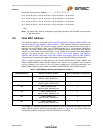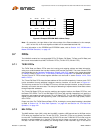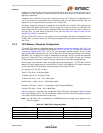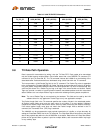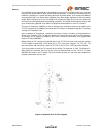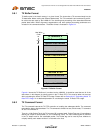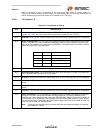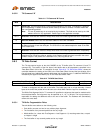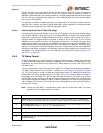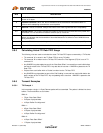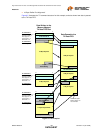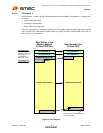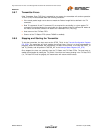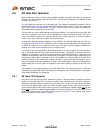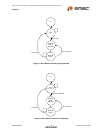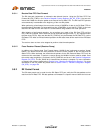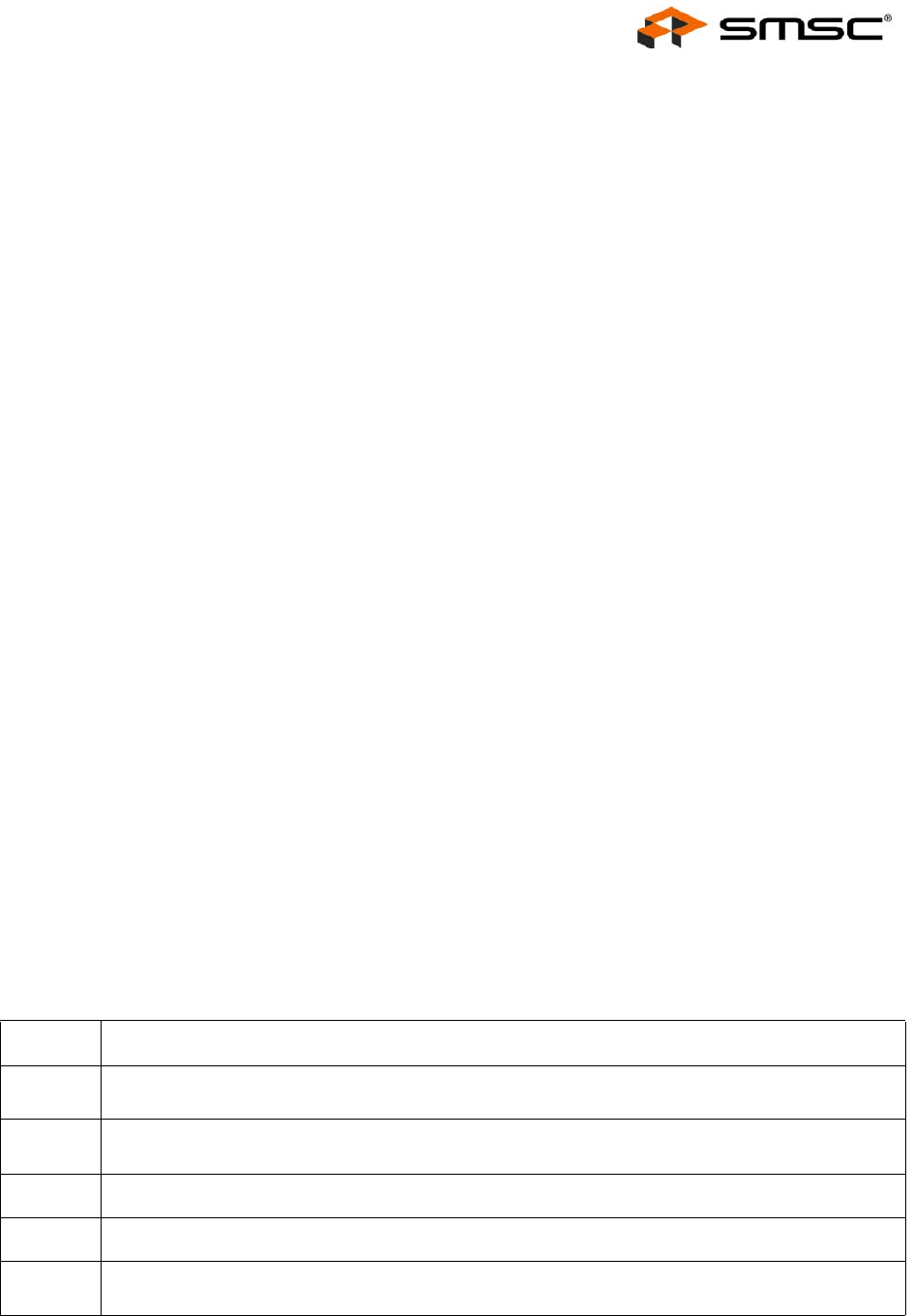
High Performance Two Port 10/100 Managed Ethernet Switch with 32-Bit Non-PCI CPU Interface
Datasheet
SMSC LAN9312 127 Revision 1.4 (08-19-08)
DATASHEET
The MIL operates in store-and-forward mode and has specific rules with respect to fragmented
packets. The total space consumed in the TX MIL FIFO must be limited to no more than 2KB - 3
DWORDs (2,036 bytes total). Any transmit packet that is so highly fragmented that it takes more space
than this must be un-fragmented (by copying to a driver-supplied buffer) before the transmit packet
can be sent to the LAN9312.
One approach to determine whether a packet is too fragmented is to calculate the actual amount of
space that it will consume, and check it against 2,036 bytes. Another approach is to check the number
of buffers against a worst-case limit of 86 (see explanation below).
9.8.3.2 Calculating Worst-Case TX MIL FIFO Usage
The actual space consumed by a buffer in the TX MIL FIFO consists only of any partial DWORD offsets
in the first/last DWORD of the buffer, plus all of the whole DWORDs in between. Any whole DWORD
offsets and/or alignments are stripped off before the buffer is loaded into the TX Data FIFO, and TX
command words are stripped off before the buffer is written to the TX MIL FIFO, so none of those
DWORDs count as space consumed. The worst-case overhead for a TX buffer is 6 bytes, which
assumes that it started on the high byte of a DWORD and ended on the low byte of a DWORD. A TX
packet consisting of 86 such fragments would have an overhead of 516 bytes (6 * 86) which, when
added to a 1514-byte max-size transmit packet (1516 bytes, rounded up to the next whole DWORD),
would give a total space consumption of 2,032 bytes, leaving 4 bytes to spare; this is the basis for the
"86 fragment" rule mentioned above. For more information on the MIL FIFO’s refer to Section 9.7.2,
"MIL FIFOs," on page 120.
9.8.4 TX Status Format
TX status is passed to the host CPU through a separate FIFO mechanism. A status word is returned
for each packet transmitted. Data transmission is suspended if the TX Status FIFO becomes full. Data
transmission will resume when the host reads the TX status and there is room in the FIFO for more
“TX Status” data.
The host can optionally choose to not read the TX status. The TX status can be ignored by setting the
“TX Status Discard Allow Overrun Enable” (TXSAO) bit in the Transmit Configuration Register
(TX_CFG). If this option is chosen TX status will not be written to the FIFO. Setting this bit high allows
the transmitter to continue operation with a full TX Status FIFO. In this mode the status information is
still available in the TX Status FIFO, and TX status interrupts still function. In the case of an overrun,
the TXSUSED counter will stay at zero and no further TX status will be written to the TX Status FIFO
until the host frees space by reading TX status. If TXSAO is enabled, a TXE error will not be generated
if the TX Status FIFO overruns. In this mode the host is responsible for re-synchronizing TX status in
the case of an overrun.
Note: Though the Host MAC is communicating locally with the switch fabric MAC, the events
described in the TX Status word may still occur.
BITS DESCRIPTION
31:16 Packet TAG. Unique identifier written by the host into the Packet Tag field of the TX command ‘B’
word. This field can be used by the host to correlate TX status words with the associated TX packets.
15
Error Status (ES). When set, this bit indicates that the Ethernet controller has reported an error. This
bit is the logical OR of bits 11, 10, 9, 8, 2, 1 in this status word.
14:12
Reserved. These bits are reserved. Always write zeros to this field to guarantee future compatibility.
11
Loss of Carrier. When set, this bit indicates the loss of carrier during transmission.
10
No Carrier. When set, this bit indicates that the carrier signal from the transceiver was not present
during transmission.



